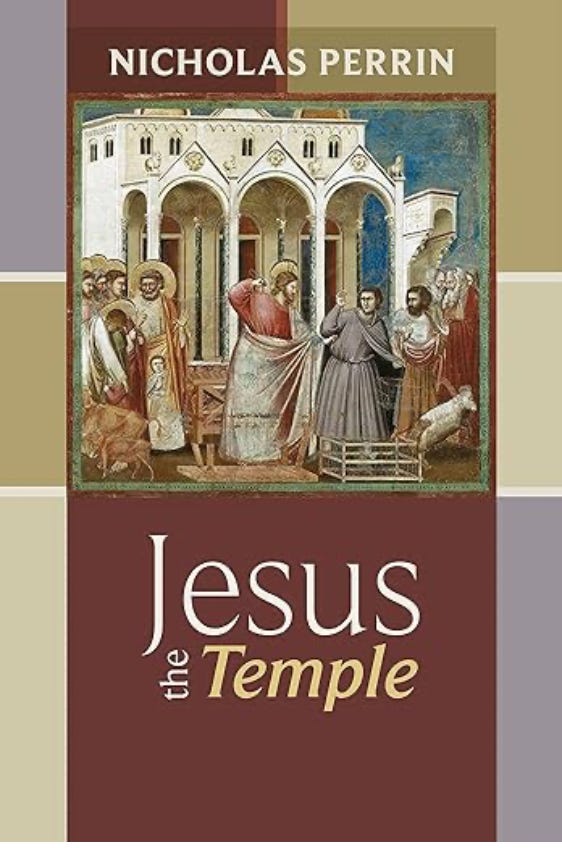A few days ago a car wash attendant saw the book Jesus the Temple in my hand and enthusiastically queried, “Hey, is that a book about Jesus?” I said, “Well, yes. It’s about the Jewish temple showing Jesus as a kind of new temple. It also highlights the historical, cultural, religious, and political background around the first century.” His response was filled with irony: “Oh! That’s too deep for me. I just read the Bible.” I said “Good! Of course, you know the Bible’s pretty deep, too.” End of discussion. He confirmed my car wash order and off we went; he to vacuuming and me to reading.
Speaking of vacuums, Jesus the Temple by Nicholas Perrin proves an important principle that I learned throughout my seminary days, namely, the Bible was not written in a historical vacuum. With fresh insights and careful analyses, Jesus the Temple creatively opens up the historical milieu behind the ministry of Jesus. Perrin’s book was not only intriguing for me but ground-breaking. Some of the biblical texts Perrin unpacks will never be read the same, since I now have a deeper appreciation for what temple worship had become (or I should say, “reduced to”) in Jesus’ day.
A sampling of Perrin’s careful scholarship can be seen by what he does with the Gergesene demoniac (Mark 5:1-20). He argues for “Jesus’ exorcistic activity within the context of Zechariah 13, that is, as a symbolic expression of Yahweh’s imminent intention to purify the land of idolatry and dark spiritual forces” (p. 163), he notes that sending the “Legion” (note the allusion to Roman military) of evil spirit(s) into the swine was a symbolic means of purifying the land. Perrin submits:
This encounter with the demoniac is a prophetic speech act, in effect declaring that the ‘unclean spirit’ of pagan Rome was due to be dislodged…Jesus’ exorcism then would have not only effected a substantial loss of animal property, but also, given that the Roman soldiers garrisoned at nearby Hippos would have likely depended on the swine as a food source, served to the legionnaires of a staple delicacy. In this respect, Jesus’ measures amounted, albeit in an indirect way, to an act of political sabotage. The symbolic irony could hardly have been lost on those present: the destruction of the pigs would have been a subtle but nonetheless telling indication that Rome was perhaps more vulnerable than it would have otherwise liked to believe…[Moreover] the wild boar was as much symbolic of Torah-based impurity as it was of Roman power [since it was] the mascot of the Tenth Legion….You don’t have to be a sports expert to realize that when an over-zealous fan throws a snowball at the opposing team’s mascot, it is not really the mascot he is attacking but what the mascot represents. By driving two thousand living Roman mascots into the sea, Jesus was, as it were, throwing his own snowball. He was also of course capitalizing on one very well known dramatic moment to portray another. Mindful of the narratives of creation and Exodus, both containing stories of God’s overcoming his opposition in the sea in order to establish sacred space, Jesus saw circumstances on the far shore as an opportunity—and planned accordingly. It was the perfect convergence of factors which Jesus manipulates in order to dramatize a cosmic-level storm, a storm which was now ready to burst in his own time and through his own movement. And at the end of the driving rains, Jesus seemed to reason, a renewed and purified space would emerge. In ridding the promised land of the unclean spirit and the quintessential symbol of its human minions, Jesus is clearing sacred space and in effect purifying the land. (pp. 167-168)
There is much in this volume to commend it. In addition, it has immense apologetic value showing even-handedness in dealing with redaction critics and cynics of historical methodologies. If you’re looking for a deep dive into the historical Jesus that is thoroughly informed and profoundly insightful, I highly recommend Jesus the Temple.




